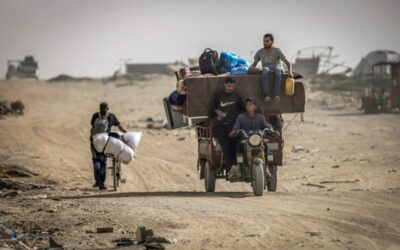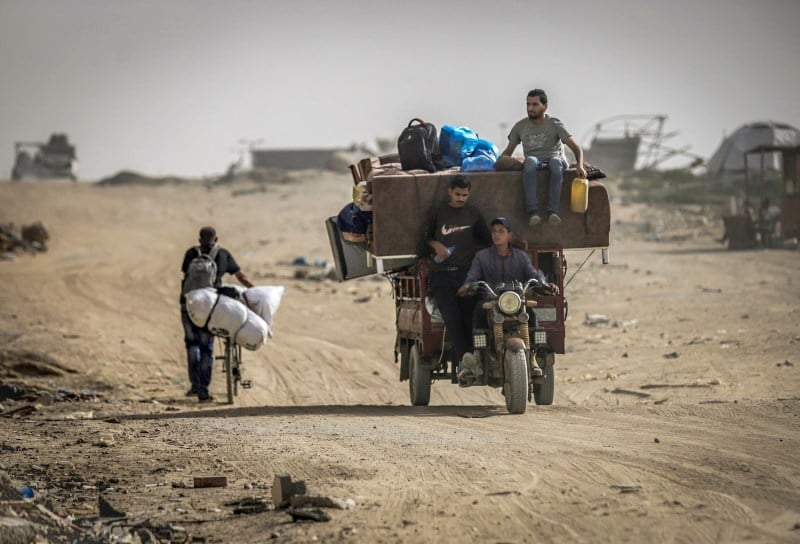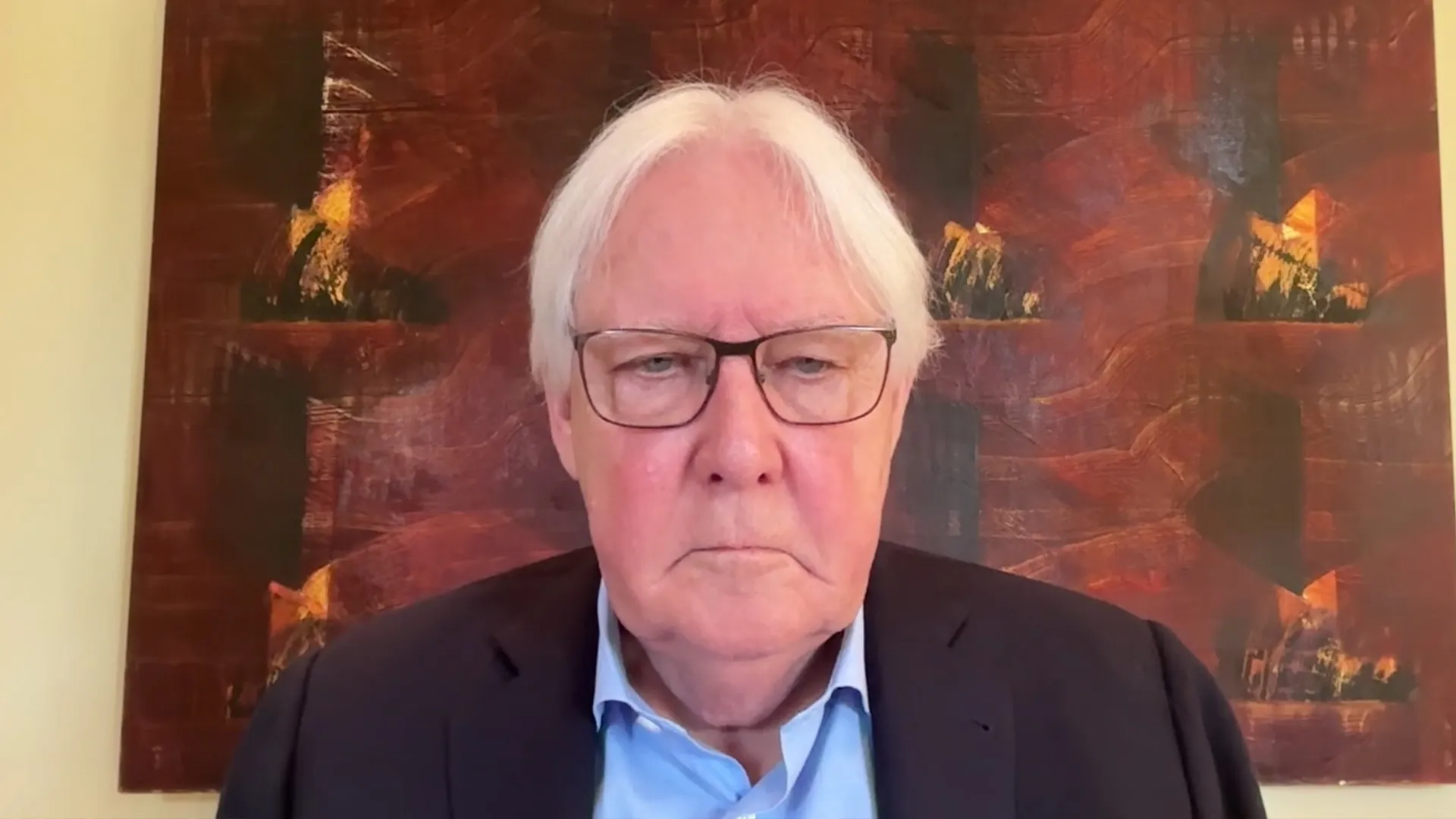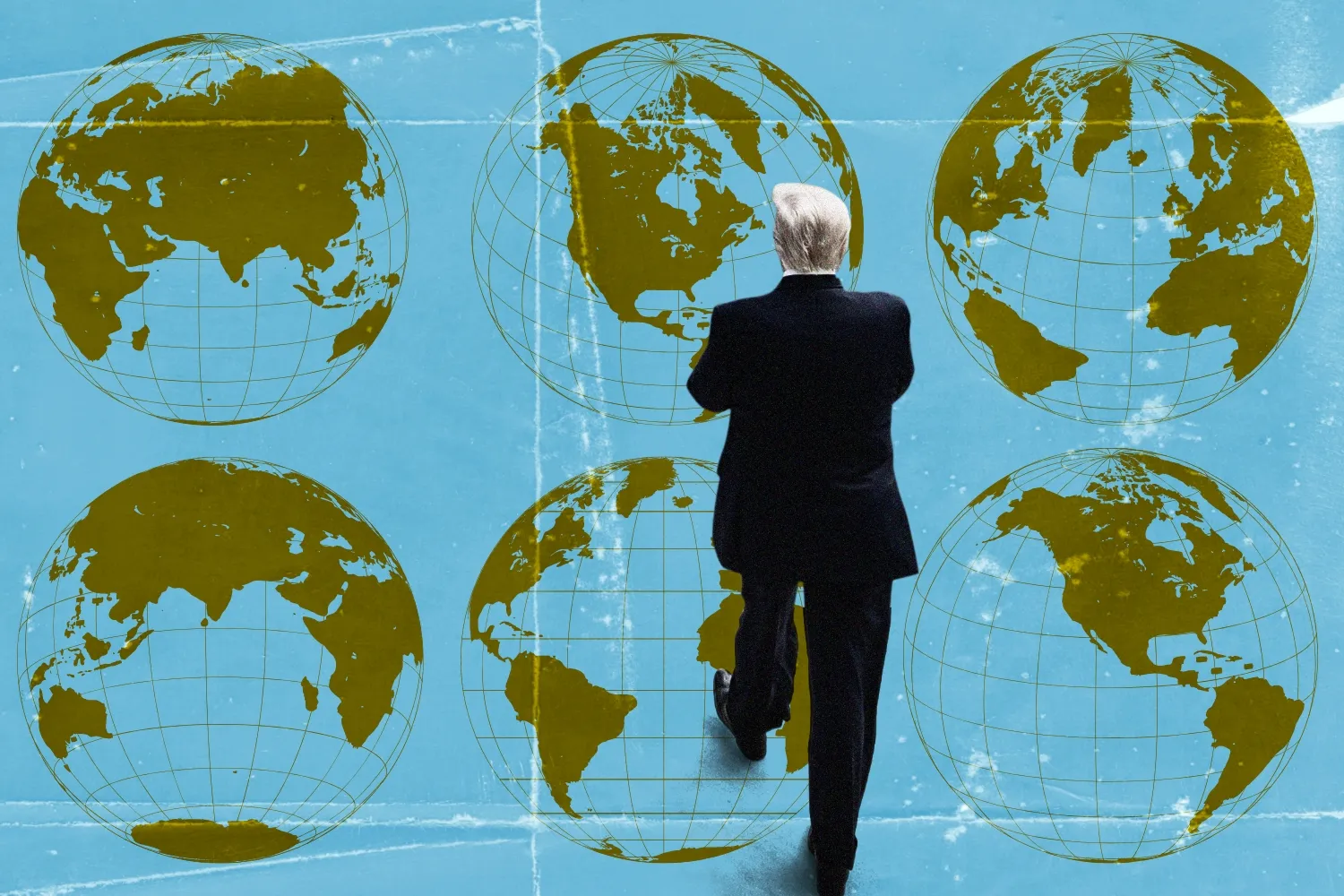Trump’s Tariffs Crush the ASEAN Economic Model

Trump’s Tariffs Crush the ASEAN Economic Model
Southeast Asia is panicking as free trade vanishes.
Malaysian Trade Minister Tengku Zafrul Aziz speaks during a press conference regarding U.S. tariffs in Kuala Lumpur on April 7. Arif Kartano/AFP via Getty Images
“The era of rules-based globalization and free trade is over. We are entering a new phase—one that is more arbitrary, protectionist, and dangerous.” Looking somberly at the camera, Singaporean Prime Minister Lawrence Wong had a grim warning to deliver to the island-nation last week. As a free trade entrepôt and financial node, Singapore has a lot to lose.
But what is true for Singapore is doubly true for the rest of Southeast Asia. The region has been one of globalization’s winners; export-led economies powered growth, which bought social peace. Now that has changed, and a looming economic crisis may spark a political reckoning, too.
“The era of rules-based globalization and free trade is over. We are entering a new phase—one that is more arbitrary, protectionist, and dangerous.” Looking somberly at the camera, Singaporean Prime Minister Lawrence Wong had a grim warning to deliver to the island-nation last week. As a free trade entrepôt and financial node, Singapore has a lot to lose.
But what is true for Singapore is doubly true for the rest of Southeast Asia. The region has been one of globalization’s winners; export-led economies powered growth, which bought social peace. Now that has changed, and a looming economic crisis may spark a political reckoning, too.
No other region in the world is as trade dependent as Southeast Asia. In 2022, the collective trade-to-GDP ratio of countries in the Association of Southeast Asian Nations (ASEAN) stood at 106.2 percent, a hair ahead of the European Union at 103.6 percent. But it gets worse: 80.8 percent of its exports are goods, the class of export that President Donald Trump is most fixated on, given his hallucinations of U.S. industrial revival.
The United States is ASEAN’s second-largest export market after China, receiving about a fifth of its goods. Importantly, though, manufactured products make up the overwhelming majority of goods exported.
Now every single ASEAN country has been slapped with brutal tariffs: Cambodia with 49 percent, Laos 48 percent, Vietnam 46 percent, Thailand 36 percent, Indonesia 32 percent, Malaysia 24 percent, Brunei 24 percent, Philippines 17 percent, and Singapore 10 percent. Trump claimed his tariffs were “reciprocal,” but they were calculated not based on other countries’ tariffs but using a simple formula in which the higher a nation’s trade surplus with the United States, the greater the punishment. The brutal logic, insofar as there is any, to Trump’s tariffs is on full display the more a country sells to the United States—especially if it is too poor to purchase many U.S. products. The shock to the region is hard to overstate.
When Trump returned to office, many in the region were rather pleased. While tariffs were expected, these had been a major feature—by normal standards—of Joe Biden’s presidency, too. There was a belief that China tariffs might even represent an opportunity. Many manufacturers had already relocated operations from China to Southeast Asia in response to U.S. tariffs.
More fundamentally, many retained the belief that Trump was ultimately a pragmatic businessman, prone to saying outrageous things but ultimately open to deals and free of Democratic canting about democracy.
“He [Trump] is always pro-business,” former Singaporean Foreign Minister George Yeo confidently declared at a February business summit in Jakarta. “In all his actions, he has one eye on the stock market. … If it stays down too long, he will switch.”
Now Trump is making Yeo, and many others in foreign capitals and on Wall Street, eat those words. Apparently unmoved by the stock market turmoil, Trump declared on Sunday that “sometimes you have to take medicine to fix something.”
Despite it all, the idea that there is still a deal to be struck guides ASEAN’s response. While China has punched back, slapping 34 percent tariffs on U.S. goods, the response of ASEAN has been to look to appease Trump. Vietnam has gone furthest, offering to drop all tariffs on U.S. goods. Cambodia has proposed slashing tariffs on U.S. goods to 5 percent. Singapore, Thailand, Malaysia, and Indonesia have refrained from initial action but are all gearing up for rapid negotiations. Meanwhile, the Philippines—America’s only treaty ally in the bloc—is also proposing cutting tariffs on U.S. goods.
“Not retaliating is the overall strategy from ASEAN countries, hoping Trump will be willing to make exceptions,” said Dewi Fortuna Anwar, a co-founder of the Foreign Policy Community of Indonesia. “Trump is committed to protect the U.S. market, but like the Godfather, he’ll likely be more generous to those willing to kiss the ring. As [Southeast Asia] is the epicenter of U.S.-China rivalry, Trump will probably not want to push the region completely into the China orbit. But some kowtowing will be required.”
Whether this will work, though, is doubtful. “This is not a negotiation. This is a national emergency based on a trade deficit that’s gotten out of control because of cheating,” Peter Navarro, Trump’s trade advisor who is said to have designed the tariffs, told Fox News on Sunday. “Don’t say you want to lower the tariffs and be done with it. It’s the non-tariff cheating. Stop manipulating your currencies. Stop dumping stuff in.”
Still, ASEAN has few other good options. Its economies are just simply not large enough to slug it out toe-to-toe with the United States in a trade war, as China seems prepared to do. In 2023, total regional GDP stood at 3.8 trillion—about a fifth of China’s.
Besides, there is no guarantee that ASEAN will move in concert. For now, there are some attempts to coordinate efforts. But the temptation to cut separate deals will be strong, if at all possible, especially as different countries face different levels of exposure. Massively trade-dependent Vietnam and Cambodia are eager for a deal as fast as possible. Indonesia will feel the urgency, too, but with its large domestic market and relatively low trade dependency, the issue is less sharp. Meanwhile, the Philippines is slyly suggesting that the tariffs could actually help its economy—its rate, after all, is “only” 17 percent.
As a result, ASEAN is facing an extremely dangerous time not just economically but politically. For decades, the region’s governments have tied their political models to globalization—trade fueling growth that in turn buys social peace. The last time the region saw as major a shock to this model was during the 1997-98 Asian financial crisis. That period saw a military junta toppled in Thailand, Indonesia’s dictatorship tumble, and a bout of brutal political infighting in Malaysia. Today’s economic crisis could spawn political crises just as dramatic.
Joseph Rachman is a freelance journalist covering Indonesia and other stories from around Southeast Asia. X: @rachman_joseph
More from Foreign Policy
-

American flags are draped around tables and pipes in a small factory room as women work at sewing machines to produce them. Tariffs Can Actually Work—if Only Trump Understood How
Smart trade policy could help restore jobs, but the president’s carpet-bomb approach portends disaster.
-

Donald Trump looks up as he sits beside China’s President Xi Jinping during a tour of the Forbidden City in Beijing on Nov. 8, 2017. Asia Is Getting Dangerously Unbalanced
The Trump administration continues to create headlines, but the real story may be elsewhere.
-

Trump announces tariffs Trump’s Wanton Tariffs Will Shatter the World Economy
Economic warfare is also a test for U.S. democracy.
-

The Department of Education building in Washington, DC on March 24. Why Republicans Hate the Education Department
Broad popular support means that even Ronald Reagan failed at dismantling the agency.







Join the Conversation
Commenting on this and other recent articles is just one benefit of a Foreign Policy subscription.
Already a subscriber?
.
Subscribe
Subscribe
View Comments
Join the Conversation
Join the conversation on this and other recent Foreign Policy articles when you subscribe now.
Subscribe
Subscribe
Not your account?
View Comments
Join the Conversation
Please follow our comment guidelines, stay on topic, and be civil, courteous, and respectful of others’ beliefs.
Change your username |
Log out
Change your username:
CANCEL
Confirm your username to get started.
The default username below has been generated using the first name and last initial on your FP subscriber account. Usernames may be updated at any time and must not contain inappropriate or offensive language.